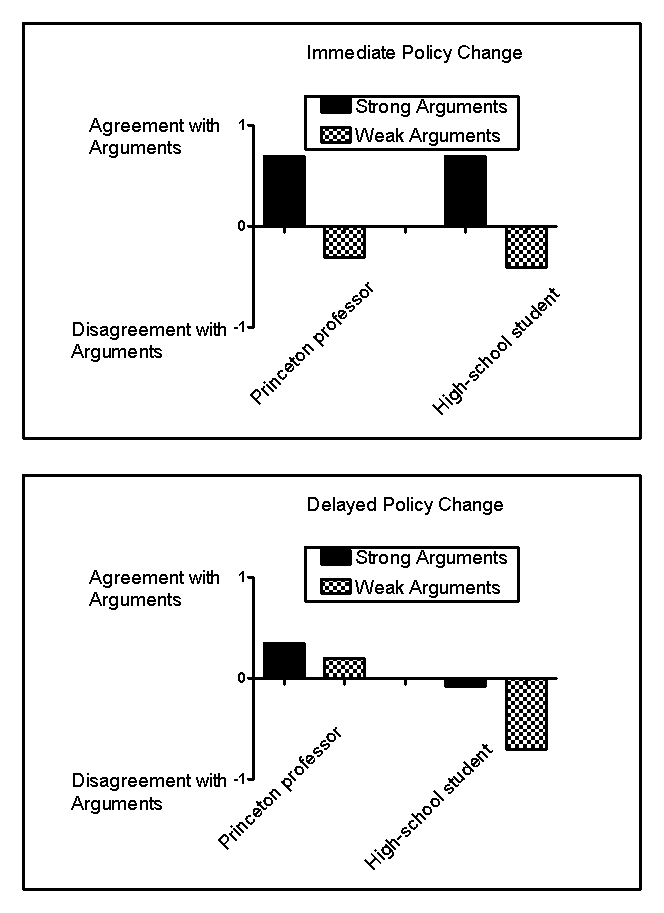Use the following to answer questions
Scenario II
The following scenario contains fabricated results consistent with the following study:
Petty,R.E. ,Cacioppo,J.T. ,& Goldman,R.(1981) .Personal involvement as a determinant of argument-based persuasion.Journal of Personality and Social Psychology,41,847-855.
Every day,consumers are exposed to scientifically based sales,marketing,and public relations strategies designed to influence purchasing decisions,change opinions,or win votes.One common sales strategy is the foot-in-the-door technique,a method that involves first making a smaller request that consumers are likely to grant and then following it with a larger request.Another common strategy is the door-in-the-face technique,which involves making an unreasonably large request that consumers will reject and then following it with a smaller request.When persuasion is necessary,it usually takes one of two forms: heuristic persuasion,which involves an appeal to habits or emotion,and systematic persuasion,which involves an appeal to facts and reason.Often,people will rely more on heuristics-simple shortcuts or "rules of thumb"-to make decisions instead of systematically weighing the evidence.
Petty and colleagues (1981) investigated some of these techniques in college students listening to arguments in favor of their college requiring an institution-level comprehensive final examination for graduation.Some students were led to believe that,if adopted,this policy would take place right away,and some were led to believe that the change would take place in a decade.In addition,some of the students were led to believe that they were listening to an argument from a Princeton professor,and others were led to believe that they were listening to an argument from a high-school student.Finally,some students heard strong arguments in favor of the policy,and some heard weak arguments.Thus,the experiment arranged six groups of students.For example,one group of students heard strong arguments from a high-school student about a far-removed policy change.Figure 13.1 shows fabricated results illustrating the major findings of this experiment.
Figure 13.1 
-(Scenario II) In the Petty and colleagues (1981) experiment,the purpose of manipulating the time that the policy would go into effect was to:
Definitions:
Rain Shadow
Leeward side (side sheltered from the wind) of a mountainous barrier, which receives much less precipitation than the windward side.
Windward Side
The side of an island, mountain, or landmass that faces the wind and receives the most rain and weather due to prevailing winds.
Leeward Side
The side of an object or area sheltered from the wind, opposite the windward side.
Movement Of Winds
The horizontal flow of air across Earth's surface, caused by variations in atmospheric pressure and the Earth's rotation.
Q60: According to Freud,the id is present at
Q68: Agreeableness is one of the Big Five
Q129: Which statement BEST describes the concept of
Q187: Worried and calm are end points on
Q249: As a technique to increase relaxation,biofeedback has
Q254: Research suggests that the ideal shape of
Q279: The obesity problem in North America has
Q298: _ love occurs rapidly and ends within
Q348: The Big Five personality factor that has
Q360: Which statement about the humanistic-existential approach to